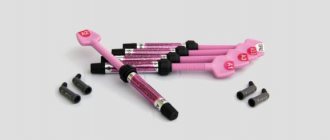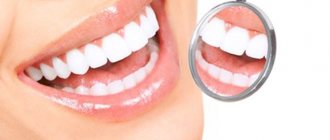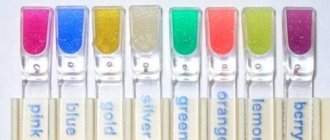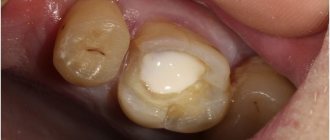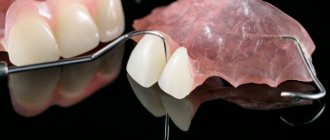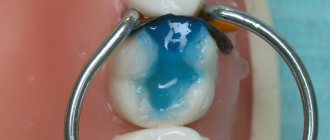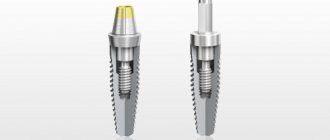Modern dentistry offers innovative techniques and materials for restoring damaged teeth with minimal discomfort. Let's consider the filling material Estelite, which is considered the best solution today.
Estelite Sigma Quick is a Japanese-made composite composition. The mass is a universal complex of components, has radiopaque properties and good light curing. The popularity of the material is due to its good aesthetic properties and allows it to reduce the duration of polymerization.
General overview
Estelite Sigma Quick is a modern composite mass, specially developed by Japanese specialists in the field of dental practice for filling teeth.
The drug is a universal set of elements characterized by radiopaque characteristics and excellent light-curing properties.
Combined with a high aesthetic factor and fast polymerization processes, the material has proven itself in clinics around the world, being one of the best products among its product range.
Description
Estelite Sigma Quick is a universal, low-shrinkage, supra-nano-filled composite material intended for the restoration of class IV cavities. Its filler is 100% spherical. Estelite Sigma Quick contains 82% by weight (72% by volume) silicon-zirconium filler; spherical filler particles ensure uniform dispersion of light, allowing the best match of the shade of the material to the tooth tissue and surrounding teeth. In addition, as the manufacturer indicates, the material with a spherical filler provides high abrasion resistance and causes less abrasion of antagonist teeth. Due to the fact that Estelite Sigma Quick has low volumetric shrinkage (1.3%) and low polymerization stress, it is less likely to cause post-filling pain and loss of marginal seal, which ensures long-term comfort for the patient. The working time of the material is 90 minutes under the light of a working lamp; The material has a proprietary polymerization initiator system that allows it to cure quickly, with minimal change in shade over time. The material has 20 shades, available in both syringes and unitoses, but in most cases one shade replaces several, so there is no need to have all the shades. This product has received a clinical score of 99% from THE DENTAL ADVISOR and is the only composite to be awarded the title of "Best All-Purpose Composite" four years in a row!
Estelite – a new word in dental fillings
Quite a few patients will confirm that going to the dentist has always been a very difficult process and few could decide to do it voluntarily.
But the days when filling teeth was a painful procedure are long gone. Today, with the help of introduced innovations, new scientific approaches, high-quality materials and equipment, the prevention and treatment of the oral cavity will be painless and comfortable.
In this article we will talk about the material for filling teeth Estelite.
general information
Japanese scientists have created a special composite solution designed for affected teeth called Estelite Sigma Quick
. This is a special set of elements that have radiopaque properties and can be cured using light radiation.
In addition, this substance looks very aesthetically pleasing and does not stand out at the filling site. The polymerization process is quite fast, so the created product has become popular and used by many dental clinics around the world. Today it is included in the list of the best products among this kind of products.
Components and characteristics
The high level of quality and strength of the presented material is based on the excellent mechanical and physical properties that are inherent in the elements of the composition of this composite mass.
If we talk about filling, then Estelite largely consists of silicon-zirconium and composite filler. Its share in the total mass reaches 82%. The filling material also contains an inorganic compound, which is a spherical submicron filler. Its average particle size reaches only 0.2 microns, and the fractional composition fluctuates at the level of 0.1-0.3 microns. This element is responsible for the level of gloss and slow abrasion of the substance. The monomer base contains bis-glycedimethyl methacrylate (Bis-GMA) and triethylene glycol dimethacrylate.
The higher the degree of filling of the composite substance, the lower the level of polymerization shrinkage.
A feature of the Estelite filling material will be the use of RAP technology or a radical-enhanced polymerization activation system.
Using light radiation emitted by a photopolymerizer (peak wavelength is 470 nm), the time required for the substance to harden is reduced by almost three times compared to other materials traditionally used for filling teeth.
It is thanks to the presence of this unique system in the composition of the Estelite Sigma Quick material that the long service life of the filling is ensured. The substance is presented in syringes and in unit doses (PLT, “PreLoadedTip”).
How it works?
Dentin fragments are instantly filled with the presented preparation. This must be done so that the adhesives penetrate inside at the same level and to demineralize the composition. Only 100% occupancy allows the formation of an integral monomer structure.
In addition, the drug does not depend on whether the working area is dry or wet. The monomer adheres well and holds firmly, which is another positive quality of Estelite.
In order to calculate the material filling boundary with maximum accuracy, a special pigment is used. After the procedure, it easily disappears from the teeth and leaves no traces.
It is also worth paying attention to the fact that this drug significantly reduces the level of enamel sensitivity and promotes good strength. This is what allows it to be one level above traditional composite filling materials. Estelite is also distinguished by its versatility and ease of use.
Composition and properties
The constituent elements of the material provide excellent mechanical and physical characteristics, and also guarantee high strength and high-quality aesthetic results.
Maximum shrinkage of the material after restoration is ensured by 82% of the silicon-zirconium mass in the composition.
Thanks to the assortment line of color solutions (more than 20), a specialist can easily select the optimal shade at the stages of restoration.
The paste lends itself well to polishing , and the resulting result does not change the original characteristics in appearance over a long period of time.
Estelite is a product distinguished by its abrasion resistance and high wear resistance.
Estelite Sigma Quick shades
A1, A2, A3, A3.5, A4, A5, B1, B2, B3, B4, C1, C2, C3, OA1, OA2, OA3, OPA2, BW (Bleach White), WE (White Enamel , white enamel) and CE (Clear Enamel/Incisal, transparent enamel/incisal shade).
Opalescent shades (OA1, OA2, OA3) have adequate degree of opacity necessary to block the darkness of the oral cavity (restoration of class III and IV cavities)
Opalescent shades can also be used as dentin shades for layer-by-layer multi-shade restorations. The shades OA1, OA2 and BW are well suited for the restoration of primary teeth. However, they are not intended for use as camouflage agents for metal teeth or highly discolored teeth such as tetracycline teeth.
OPA2 is intended for use as a camouflage agent for the treatment of minor stains, as well as for the restoration of opaque teeth (applied in a thin layer to the lingual wall of a Class III and IV cavity).
Advantages
The main advantages of using the Japanese Estelite material are its versatility and aesthetics. The brand’s nanocomposite called “Sigma Quick” is suitable for the restoration and restoration of both chewing teeth and the anterior row.
The filling material “Estelight Sigma Quick” has many advantages:
- used both to restore color and to give the correct shape to the front or lateral dentition;
- high wear resistance (tooth enamel does not wear off or deform during prolonged use);
- a large number of shades, which makes it possible to choose the most suitable one for the dentition;
- has a “chameleon effect” (the filling acquires the shade of the tooth over time, this in turn minimizes the incorrectly selected material);
- simplicity and speed of application;
- the surface of the tooth is shiny and smooth.
This is interesting: Hood on a wisdom tooth: removal methods, the need for excision (incision) in case of inflammation
But the Russian market also offers Italian-made material “Estelight Asteria”, which has similar qualities and advantages to the Japanese product. The only difference between these two filling materials is that “Asteria” has a somewhat limited range of colors, and is also applied to the tooth in two layers. The remaining characteristics, high quality, and also the price are almost the same.
What is a light seal and how is it different from a regular one?
Light filling refers to modern composites that are manufactured under the influence of a strong light source. This material contains a substance that is sensitive to light. Under the influence of ultraviolet radiation, it breaks down into radicals and thus a polymerization process occurs in the filling itself. Thanks to this, the shade that the dental filling material acquires is quite similar to the color of the nearby dentition.
Unlike a conventional filling, the luminous material hardens under the influence of a polymerization lamp, and the dentist can more accurately adjust it to its shape. In addition, such a filling is more durable than a regular one, and it is also easier to match the color to the dentition. To a prying eye, the light composite or reflector is invisible.
Principle of procedure
When using filling material, areas of dentin are filled with the substance simultaneously. This makes it possible to achieve the same deepening of the internal penetration of adhesives and demineralization of the component. A solid structure is formed due to complete filling. The adhesion of the material will be high-quality on any surface:
- wet;
- dry;
- pre-prepared.
The doctor is obliged to calculate the filling limit with maximum accuracy. A colored pigment helps to accomplish this, which will subsequently disappear from the surface of the dental unit on its own.
Some of the important properties of Estelite fillings are:
- low permeability;
- decreased sensitivity.
In a short period of time, a high-quality, durable and aesthetic filling is placed. Due to the release of fluoride ions by the filling material, the risk of caries at the filling site disappears.
Indications and contraindications
Due to the almost complete versatility of the product, the range of indications for its use is quite wide.
The drug can be used in most clinical situations, in particular:
- for direct restoration of the frontal zone of the jaw row , for example, for small anterior cavities
- when eliminating minor surface defects caused by mechanical damage - cracks, chips;
- as a base layer when performing direct restoration;
- for the treatment of organs by indirect restoration>;
- to eliminate external defects of other previously applied composite materials;
- restoration of artificial row fragments>;
- elimination of gaps and diastemas of varying degrees of severity;
- in the process of forming composite veneers - when applying the thinnest multi-layer overlays;
- therapy of caries manifestations of all types.
Since the component contains methacrylic monomers, the main contraindication to the use of the mass is individual intolerance to this element, as well as a tendency to develop allergies to methacrylics and similar compounds.
Areas of application
Dentists actively use Estelite fillings to treat dental caries. The material is used both for lateral (chewing) teeth and for restoring the aesthetics of enamel on the front teeth. Thanks to a special composition developed by Japanese scientists, the composite is resistant to mechanical abrasion and the surface shines.
Since this filling material is universal, it is used for both adults and children to treat baby teeth. The composite has also proven itself well on the dentition with veneers, in eliminating diastema, restoring the occlusal surface and opacity of the tooth. There are more than two dozen shades of fillings. But they are not used on teeth that have lost their color under the influence of tetracycline.
Rules for tooth preparation
The preparation process for the event is carried out strictly in accordance with the protocol. It consists of the following sequential stages:
- The doctor treats the dentition with a paste that does not contain fluoride. Cleaning in progress.
- The work surface is rinsed with water.
- A suitable color is selected. If bleaching was previously performed, the procedure is allowed to be performed no earlier than 14 days later.
- A rubber dam, a special latex plate, is used to isolate the tooth. The cavity is sanitized.
- To avoid changes, the enamel of the lateral dental unit is smoothed. In the front row, a bevel is made along the edge.
- When restoring artificial units made of ceramics or composites, a diamond bur is used. This is necessary in order to increase adhesion and make the surface rougher.
- Etching with phosphoric acid.
- The pulp is protected with a liner made with calcium hydroxide or glass ionomer material. The use of protection from eugenol, as well as its derivatives, is not recommended.
Prices for caries treatment
| Service | Price, ₽. |
| Examination of the patient, calculation of the cost of services | for free |
| Light polymer (Light) filling Estelite | 2800 |
| Light-polymer (Light) filling Vitrimer | 2700 |
| Light polymer (Light) filling Filtek | 2500 |
| Fuji glass ionomer cement | 2200 |
| Light-polymer (Light) filling Revolution (for a crown) | 1800 |
| Treatment of average caries MOD Estelite | 4000 |
| Treatment of average caries MOD Filtek | 3800 |
| Treatment of medium caries MOD Fuji | 3500 |
| Grinding the filling | 350 |
| Temporary filling with Septopak medicinal preparations | 550 |
| Temporary filling (dentin) | 300 |
| Temporary light filling Clip | 400 |
| Fuji insulating gasket, revolutionary | 450 |
| Light polymer therapeutic pad | 450 |
| Fiberglass pin | 1600 |
| Anchor pin | 800 |
| Titanium pin | 1500 |
| Additional surface no more than one Estelite | 800 |
| Additional surface no more than one Filtek | 600 |
| Additional surface no more than one Fuji | 500 |
| Aesthetic restoration of anterior teeth according to class III | 3500 |
| Aesthetic restoration of anterior teeth according to class IV | 3800 |
| Clinical/home whitening | 6500-8500 |
Stages of restoration
Unidoses should be used only within the instructions for use of the composition.
An ounce is measured in the dispenser, then the protective cap is removed. The paste is squeezed directly into the working cavity or preliminarily brought to the required consistency on a tablet.
If a syringe is used, the operating principle is as follows:
- remove the cap;
- turn the handle clockwise;
- squeeze the required amount of component onto the tablet;
- knead the paste.
After the material is ready for use, filling and restoration contouring begin . The paste is introduced into the hole in layers, not exceeding the maximum permissible depth in one application. The manufacturer offers a special table for this.
During the filling process, mixing Estelite with other pastes is unacceptable; this is fraught with the formation of voids and poor-quality polymerization.
Each layer must be polymerized separately - the time stated by the manufacturer. The device is located at a distance of about 2 mm from the working area.
The final stage is finishing. The restoration area is cleaned and polished using fine-grained diamond burs.
To make the boundaries between the filling and the tooth look as natural as possible, the doctor performs fractional grinding with a multifaceted carbide bur. No water is used, and the rotation speed of the bur is minimal.
The proximal parts are treated with special thin strips of vinyl or medical metal alloy.
The finished surface is polished with rubber nozzles or special devices designed for this.
The video provides a basic guide to using Estelite filling material.
Estelite instructions
1) Cleaning Thoroughly clean the tooth surface with a rubber cup containing fluoride-free paste, and then rinse with water.
2) Shade selection Before installing the rubber dam, select the appropriate shade using the Estelite Sigma Quick shade guide.
- The shade must be selected within 5 minutes; Dry teeth are lighter than moistened teeth.
- White saturation (color intensity) is the most important factor in choosing a shade.
- If you're debating between two shades, choose the lighter shade (the shade that has the most color intensity).
- When working with whitened teeth, shade selection should be done a few weeks after the whitening procedure. Whitened teeth may darken slightly.
3) Isolation Rubber dam is the best method for isolating a tooth.
4) Preparing the cavity Prepare the cavity and rinse thoroughly with water. Bevel the edges of the enamel when preparing anterior teeth (Class III, IV, V) and smooth the edges of the enamel when preparing posterior teeth (Class I, II). Bevels and smoothing of the enamel edges ensure that the boundary between the cavity edge and the restoration disappears, improving aesthetics and retention.
- From the point of view of aesthetics and strength, scalloped bevels (undulant, scalloped bevel) are preferable.
- When restoring ceramic or composite restorations, roughen the surface with a diamond bur to improve adhesion; for cleaning purposes, etch the tooth surface with phosphoric acid; rinse thoroughly with water; dry the tooth surface and apply silane according to the manufacturer's instructions.
5) Pulp protection If the cavity is located in close proximity to the pulp, a glass ionomer or calcium hydroxide gasket should be applied. To protect the pulp, DO NOT USE EUGENOL-BASED MATERIALS, as they inhibit the polymerization of the bond and/or Estelite.
6) Adhesive System Apply light-curing adhesive system according to the manufacturer's instructions. We recommend using TOKUYAMA BOND FORCE, which is a one-part, self-etching, light-curing dental adhesive.
— Self-curing adhesive systems should not be used. With Estelite we recommend the use of light-curing adhesive systems, since other types of adhesive systems, such as, for example, self-curing adhesive systems or dual-curing systems, will not provide effective adhesion when using light-curing composite materials. If you do use self-curing or dual-cure adhesive systems, make sure they can be used with light-curing composite materials.
7) Dosing 7-1. Unidose (PLT) Before use, carefully read the Special Instructions for Use of Unidose.
- Place the PLT in a suitable dispenser.
- Remove the PLT cap.
- Apply the paste directly into the cavity or pre-squeeze it onto the mixing pad.
7-2. Syringe Remove the cap of the syringe. Turn the handle clockwise to squeeze out the paste onto the mixing plate. Immediately after this, put the cap on the syringe. - DO NOT apply excessive force to the syringe if it has just been removed from the refrigerator.
8.) Filling and contouring of the restoration Bring the material into the cavity in layers. The layer of material should not exceed the specified depth (check the table above). - DO NOT mix Estelite with other types of composite materials or other shades of Estelite Sigma Quick to avoid incomplete polymerization or the formation of voids.
9) Curing Cure each layer for at least the recommended time (check table above), keeping the curing machine 2mm away from the material. — When using other brands of composite materials in layers with cured composite, follow the instructions for using those materials.
10) Finishing Process and polish the restoration. For finishing, use fine-grit diamond burs. To reduce the interface between the composite material and the natural tooth, work along the interface with a 12-point carbide bur, without water and at low speed. Use metal or vinyl sanding strips for proximal surfaces. For polishing, use rubber heads or any other suitable polishing tools such as PoGoTM (DENTSPLY/Caulk), Sof-Lex (3M ESPE, Identoflex HiLuster Dia Polishers (Kerr), or D-FINETM Hybrid Diamond.
How is preparation and recovery going?
In order to choose the right shade of the Estelite nanocomposite, there is a certain scale. But this is not the only thing you need to pay attention to. If in doubt, dentists prefer a lighter shade, because the comparison takes place on wet teeth, and they are known to be somewhat darker. You should start working with whitened teeth no earlier than 14 days after the procedure, since they tend to darken.
The material is applied to the cavity in layers of 2 ml each. Polymerization occurs after each applied layer. It is important to monitor the thickness and curing time. Final processing is carried out using a diamond bur, and polishing is done with a rubber head.
When installing a light filling, the question often arises about how long after you can eat or drink liquids. Here the dentists were divided into two groups. The first believes that you can eat and drink immediately after the manipulation, but you need to limit the intake of products with coloring pigments for the first two days.
Another group of dentists is confident that you should still abstain from eating or drinking water for two hours after installing a light filling. They motivate this by the fact that after exposure to light irradiation, the place of the tooth where the filling is installed is sensitive for some time and has increased permeability. This may cause pain or change the color. This is especially true for the restoration of the front teeth.
Precautionary measures
1) DO NOT USE Estelite for purposes not provided for in these instructions. Use strictly in accordance with the recommendations given here.
2) Estelite Sigma Quick is intended for sale and use only by licensed dental practitioners. This material is not intended for use by persons other than dental professionals.
3) DO NOT USE if security seals on packaging are damaged or there is any doubt about their authenticity.
4) If Estelite causes an allergic reaction or hypersensitivity in a patient, you should immediately stop using the drug.
5) To avoid an allergic reaction to methacrylic monomers, it is recommended to use examination gloves (polymer, vinyl or latex) at all stages of working with Estelite Sigma Quick.
Note: Some substances/materials may penetrate examination gloves. If Estelite comes into contact with examination gloves, immediately remove them and wash your hands thoroughly with water.
6) Do not allow Estelite Sigma Quick to get into your eyes, mucous membranes, skin or clothing.
- In case of contact with eyes, rinse immediately with plenty of water and consult an ophthalmologist.
- If Estelite gets on the mucous membrane, immediately wipe the affected area and then rinse thoroughly with plenty of water.
- If Estelite Sigma Quick gets on your skin or clothing, immediately clean the affected area with a cotton or gauze swab soaked in ethyl alcohol.
- The patient should rinse his mouth immediately after treatment.
7) Estelite should not be swallowed or inhaled. Swallowing or inhaling the material may cause serious injury.
8.) To avoid ingesting the drug by mistake, keep it out of the reach of children and patients.
9) Clean filling instruments with alcohol after use.
10) When using the photopolymerizer, you should wear safety glasses.
Important points
When using Estelite filling material, it is important to pay attention to the integrity of the packaging. Since the product is widely known in many countries, there is a possibility of purchasing a fake, which is significantly inferior in quality to the original.
Precautionary measures when using the Estelite nanocomposite:
- use only with medical gloves;
- if the material gets on the mucous membrane, in the eyes, respiratory organs or on clothing, you should immediately rinse the surface;
- The composite can only be used in accordance with the instructions;
- the material is purchased only by professional dentists or clinics that have the appropriate license;
- after using the filling material, all instruments are sterilized;
- Polymerization with the device is carried out only in protective glasses.
Estelite equipment
- Estelite Sigma Quick System Kit (6 syringes, 3.8 g each: A1, A2, A3, A3.5, OA3, OPA2; Estelite Flow Quick -3 syringes, 1.8 g each: A2, A3, OA3; BOND FORCE adhesive, 5ml);
- Estelite Sigma Quick Intro Kit (6 syringes, 3.8 g each: A1, A2, A3, A3.5, OA2, OPA2; BOND FORCE adhesive, 1ml);
- Estelite Sigma Quick Promo Kit (6 syringes, 3.8 g each: A2, A3, OA1, OA2, OA3, OPA2);
- Estelite Sigma Quick 3 Syringe Kit (3 syringes of 3.8 g each: A2, A3, OA3);
- Estelite Sigma Quick PLT Intro Kit (40 unit doses of 0.2 g each: A1, A2, A3, A3.5, OA2, OPA2; BOND FORCE adhesive, 1ml);
- Estelite Sigma Quick dep. syringes and unidoses in shades: A1, A2, A3, A3.5, A4(Cerv), A5, B1, B2, B3, B4, C1, C2, C3, OA1, OA2, OA3, CE(Inc), WE, BW , ORA2.
Release form and price
A Japanese company produces Estelite nanocomposite in syringes. One serving can be purchased for 1,800 - 2,500 rubles, depending on the main component of the product.
The standard set includes 9 syringes, the test set includes 6 injectors. Accordingly, their price will be on average 13,000 and 18,500 rubles.
How does it work?
Tooth fragments are filled with the composition at once, which ensures a uniform depth of penetration of the components into the cavity being filled and good adhesion.
The monomer completely fills the space, thereby creating a holistic composition. Such a filling will have reliable adhesion, regardless of the initial situation. The doctor’s task is to accurately calculate the filling boundary; for this purpose, a temporary color pigment is provided.
Main advantages of the product:
- minimizing tooth enamel sensitivity and permeability;
- versatility;
- convenience.
Reviews
Nanocomposite Estelite is a high-quality and reliable dental product that greatly simplifies the work of a specialist. It is difficult to find an identical composition among filling materials.
If you have already had to restore teeth using Estelite, and after reading the article you would like to share your feedback about the advantages or disadvantages of the presented filling, leave your review in the comments below.
Sources:
- https://www.vash-dentist.ru/lechenie/zubyi/plombyi/estelayt-estetichnyiy-material.html
- https://protecodent.ru/info/articles/2018/estelite_sigma_quick_odin_ottenok_zamenyaet_vosem/
- https://zubovv.ru/lechenie/zubyi/plombyi/material-estelayt-lider.html
- https://www.uadent.com/estelajt-estelite-sigma-quick-instrukciya/
- https://FB.ru/article/434677/plombirovochnyiy-material-estelayt-svoystva-proizvoditel-otzyivyi
- https://implant-expert.ru/lechenie-zubov/o-lechenii-zubov/jestelajt-vysokojestetichnyj-plombirovochnyj-material-novogo-pokolenija/
